Visualizing Footwear's Impact on Movement
Research, Prototype
/
2019
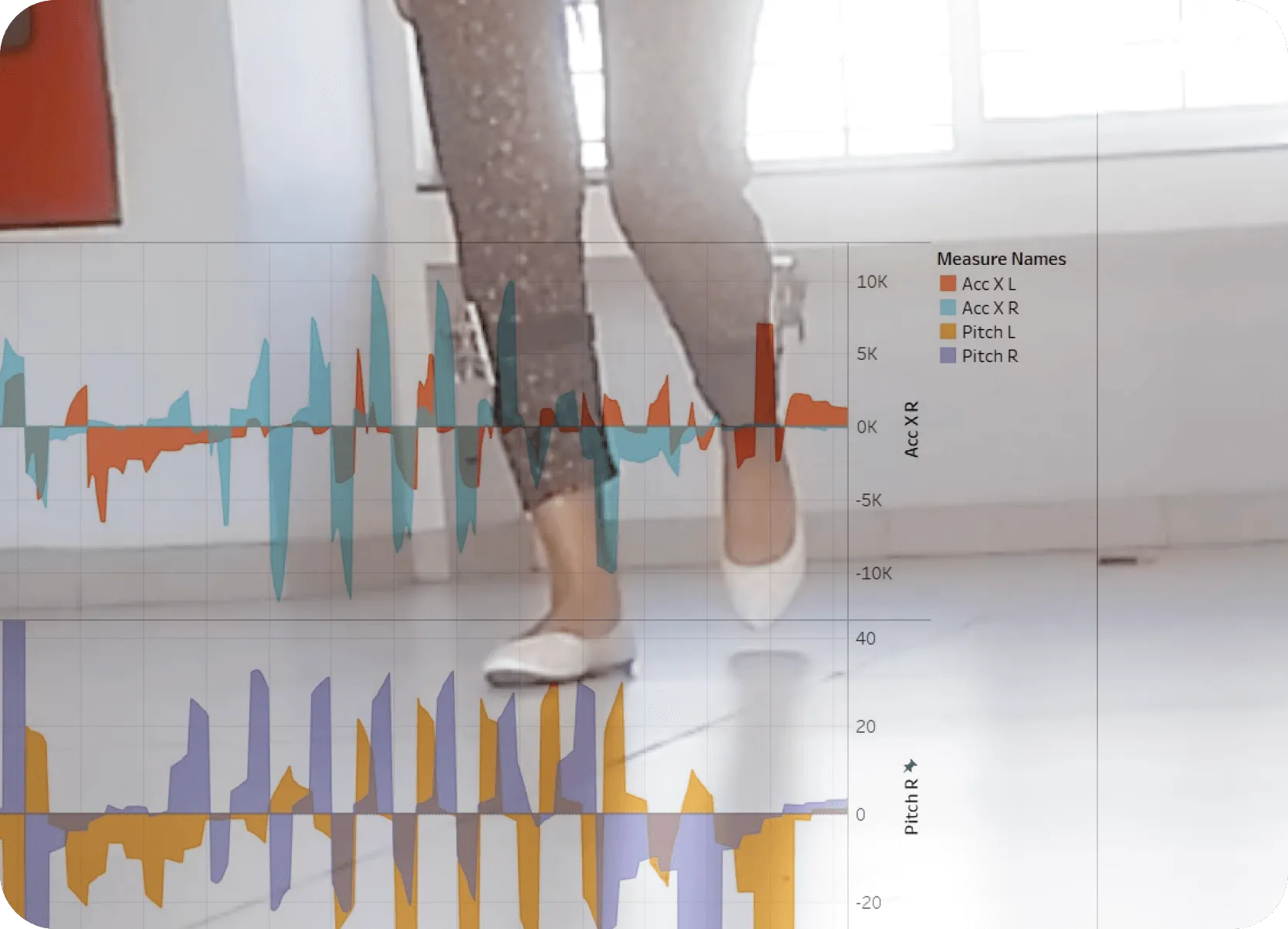
It's widely known that ill-fitting or inappropriate footwear can cause discomfort, injury, and significantly alter how we walk (our gait). Analyzing gait patterns is valuable for researchers, doctors, and coaches, but obtaining visual data showing how footwear changes movement is often expensive and complex using standard lab equipment. This research project aimed to develop and evaluate a cost-effective system using wearable Inertial Measurement Units (IMUs) to capture and visualize these footwear-induced gait alterations, making such analysis more accessible.
My Role
User Research, Research Analysis, Problem Definition, Concept Development, Prototyping, User Testing.
The Team
1 Designer, 1 Professor
Timeline
Jan 2019 — Feb 2019
Project Context: Real-World Impact & India's BHA Sizing System
Conducted in early 2019, this research explored how different footwear affects individual walking gait patterns, with the goal of visualizing these changes using accessible technology. The study underscored the importance of proper footwear fit for comfort, injury prevention, and maintaining a natural gait.
In 2024, the BHA (Bharat) footwear sizing system gained national attention in India, addressing the problem that standard European (EU) and UK sizing systems often fail to accommodate the average Indian foot. The BHA system's development validates our 2019 research premise: improper fit from ill-suited sizing significantly contributes to gait alterations and discomfort.
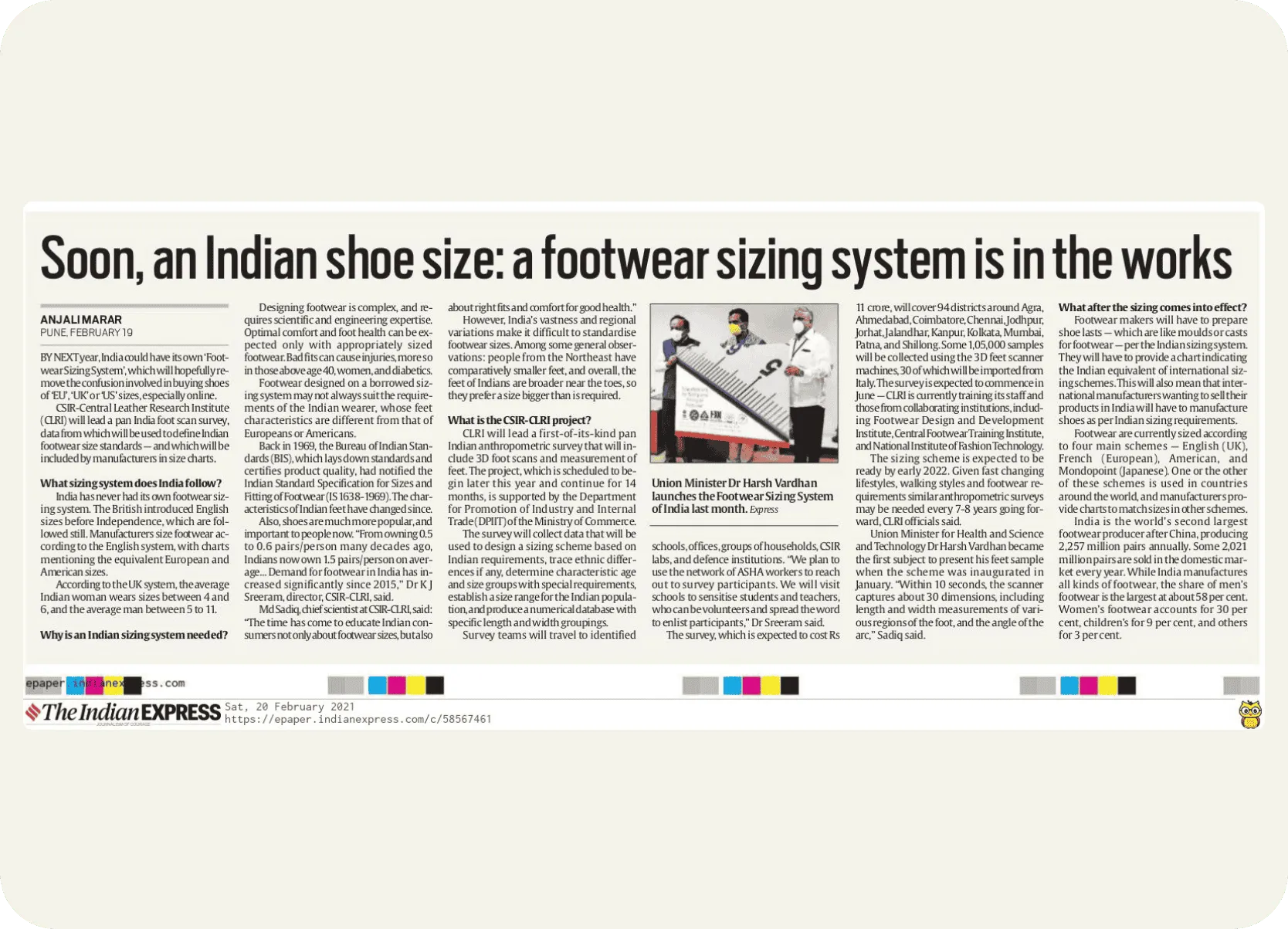



Visualizing these impacts, as explored in this project, is crucial for understanding why a dedicated Indian sizing standard is vital for better foot health and comfort nationwide. The following case study details the original 2019 research project, its methodology, and findings in visualizing footwear's impact on movement.
The Problem: Visualizing Gait Changes Affordably
While the negative impacts of improper footwear (like high heels or poorly supportive shoes) on gait mechanics are documented in research — affecting step length, ankle movement, foot pressure, and stability — easily visualizing these changes for individuals remains a challenge.
Traditional gait analysis requires expensive laboratory setups (like motion capture cameras or force plates), limiting accessibility for everyday users, clinicians, or even footwear designers. There was a need for a low-cost, portable method to capture gait data and present it visually, allowing users to understand how different shoes affect their personal movement patterns.
Methodology: Prototyping a Low-Cost IMU System
To address this, we developed a prototype system using readily available, low-cost components:
1. Hardware
-
Shank Sensor Modules (x2): Each module, worn on the outer side of the lower leg (shank), contained an MPU6050 IMU (accelerometer + gyroscope), an Arduino Nano microcontroller, an HC05 Bluetooth module for wireless communication, and a 360mAh LiPo battery power system.
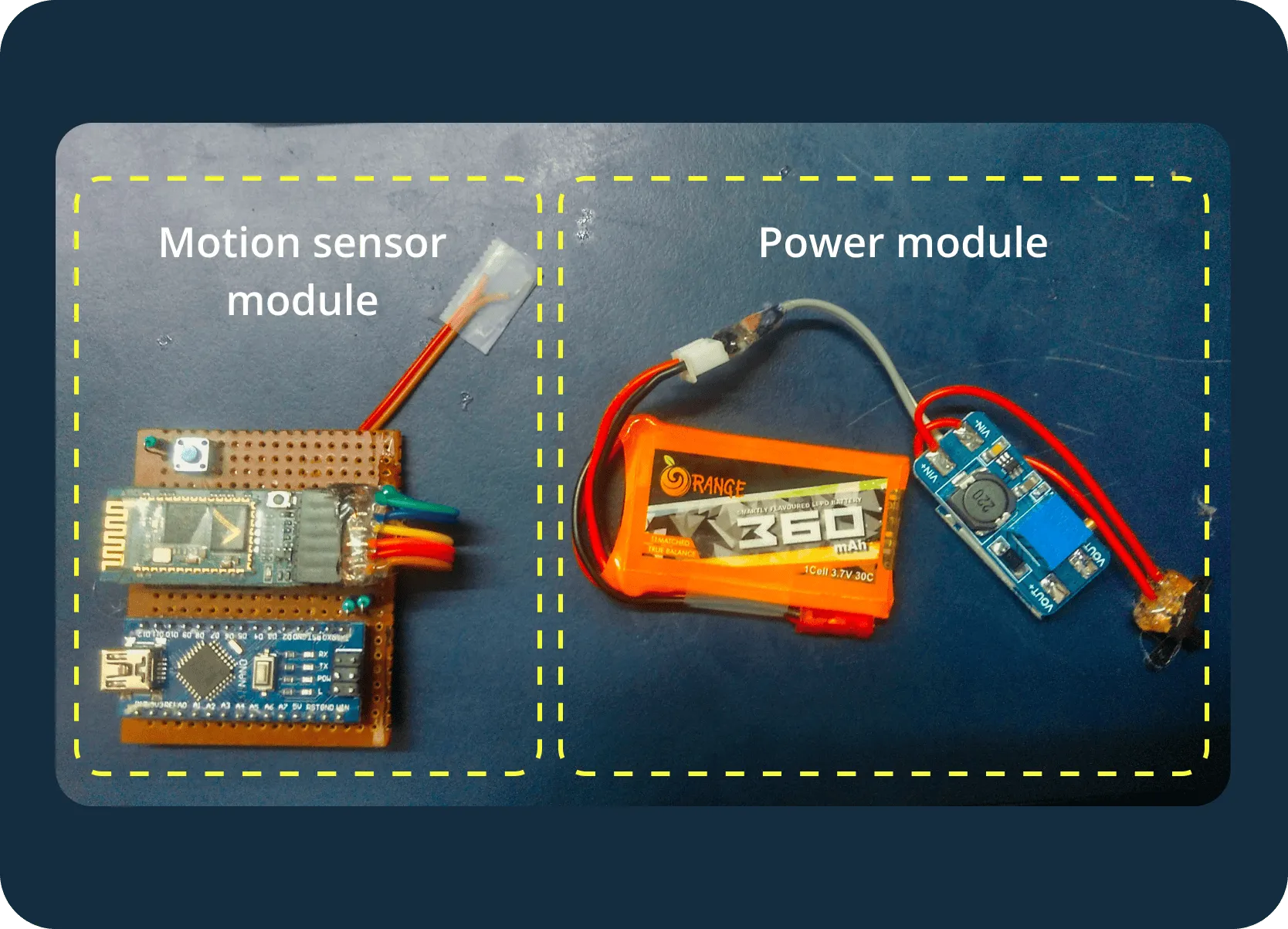
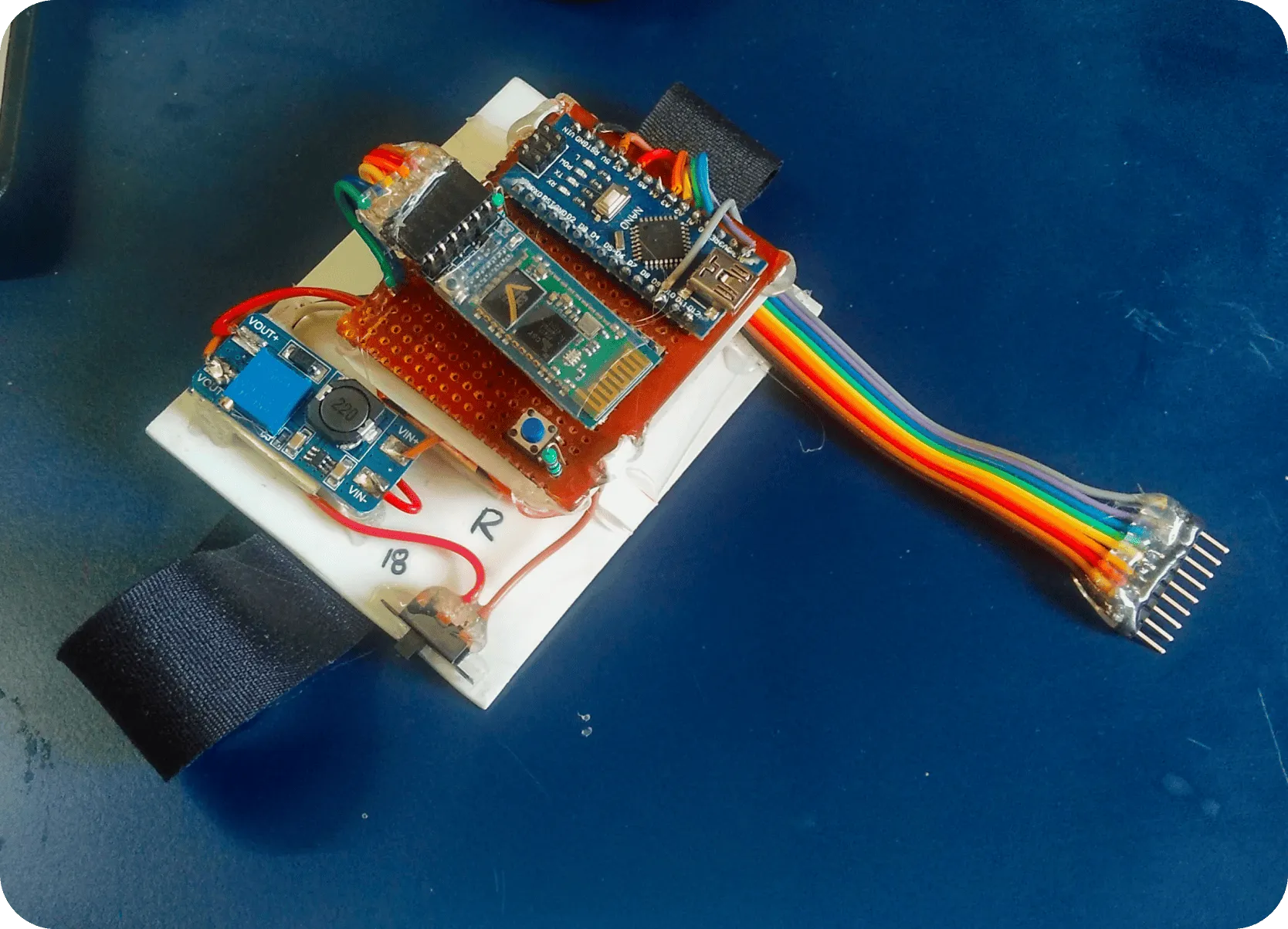
-
Foot Sensor Modules (x2 - Initial concept, not used in final user testing): Initially designed with piezoelectric sensors under a foam layer to detect heel-strike/toe-off events. However, these were excluded from user testing due to limitations in universality, sensor rigidity, and potential to interfere with natural gait.
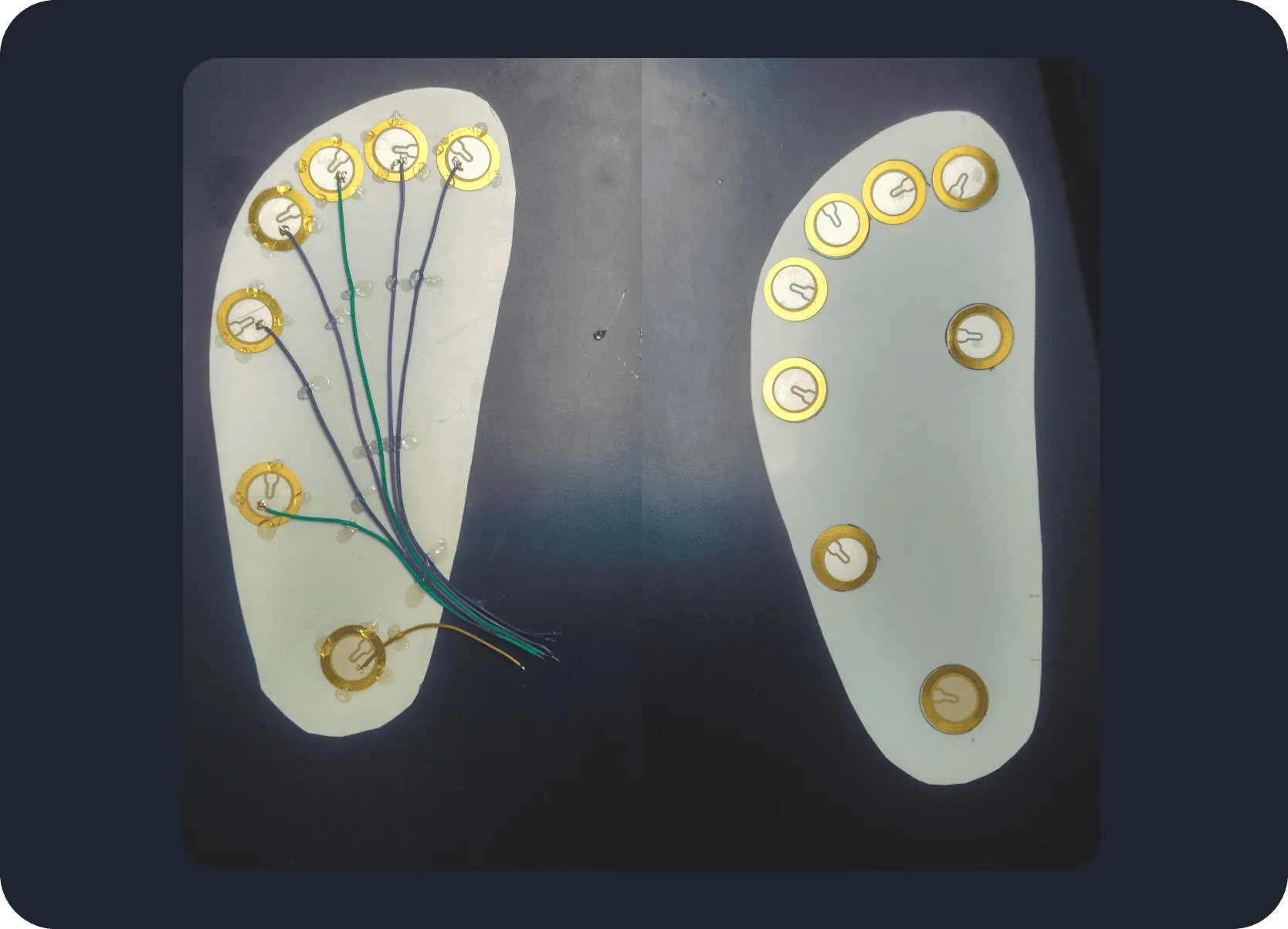
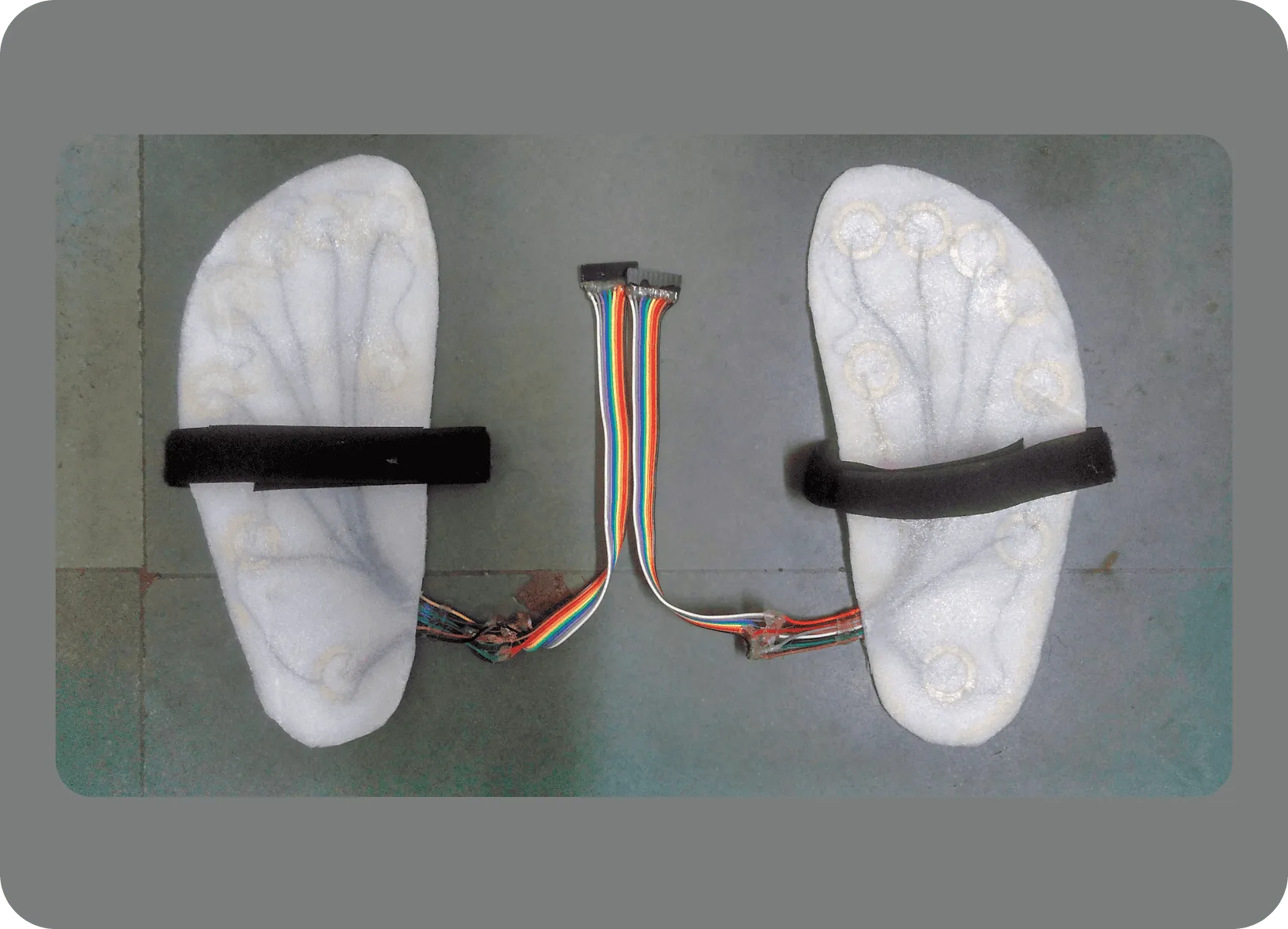
2. Software
-
A Python script captured data (timestamps, 3-axis acceleration, 3-axis angular position) from both shank IMUs via Bluetooth every 40ms.
-
Data was saved to a CSV file.
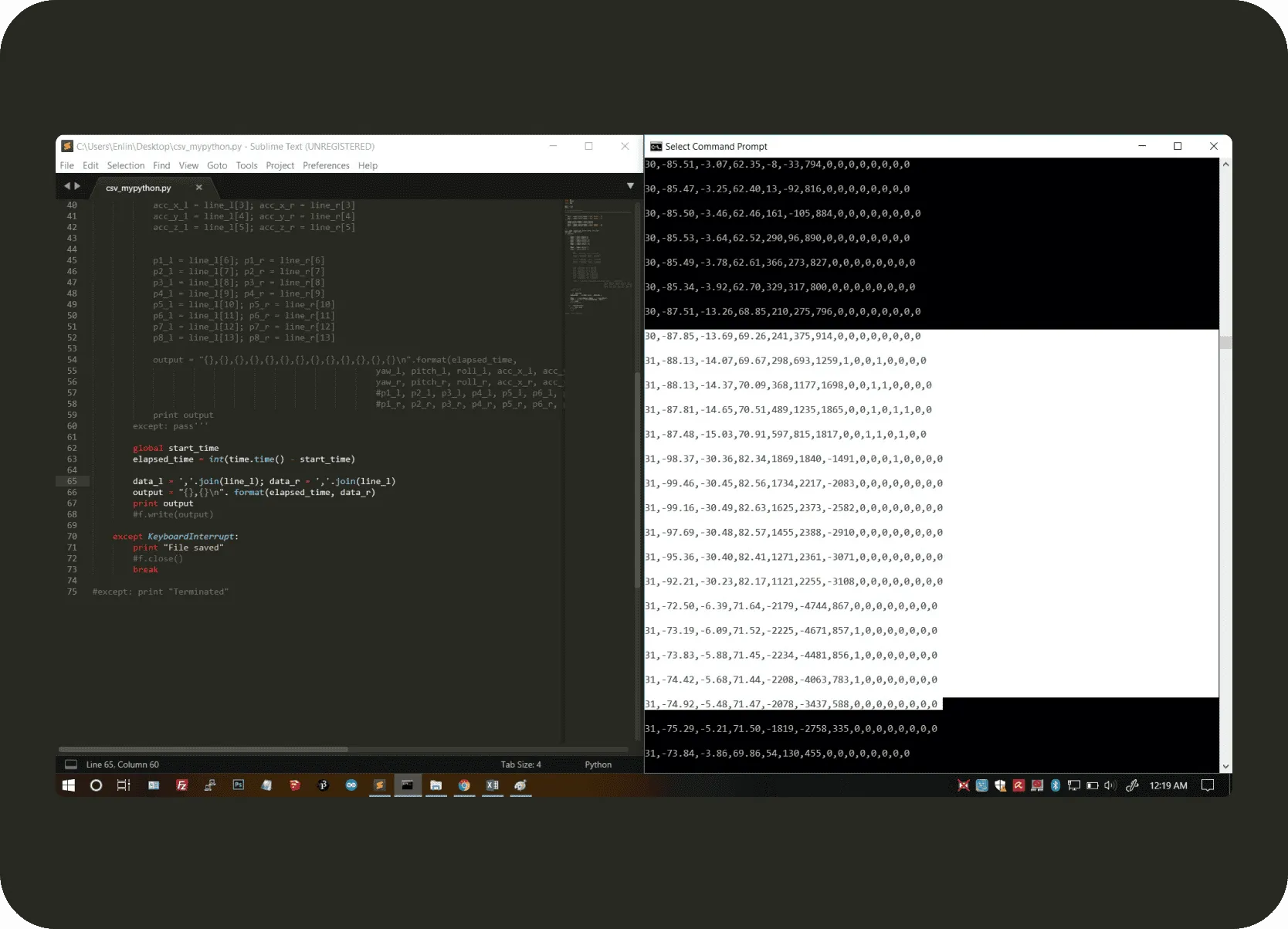
-
Tableau software was used to visualize the captured data, primarily plotting shank acceleration and angular position (pitch axis) over time for both legs on dual-axis area charts.
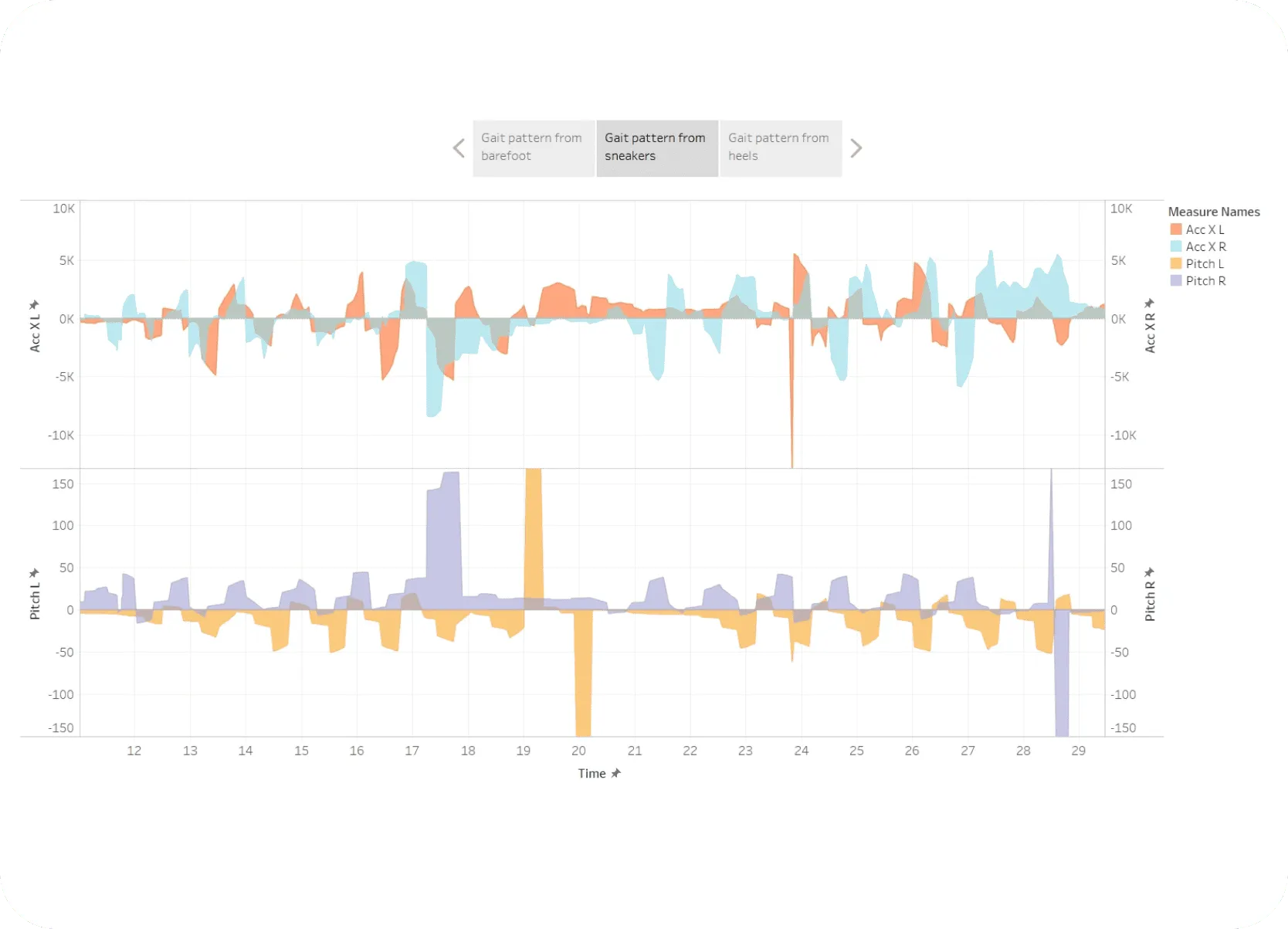
Setup
Sensors were attached to participants' shanks using Velcro straps, connected wirelessly to a laptop running the Python script for data capture during walking trials.
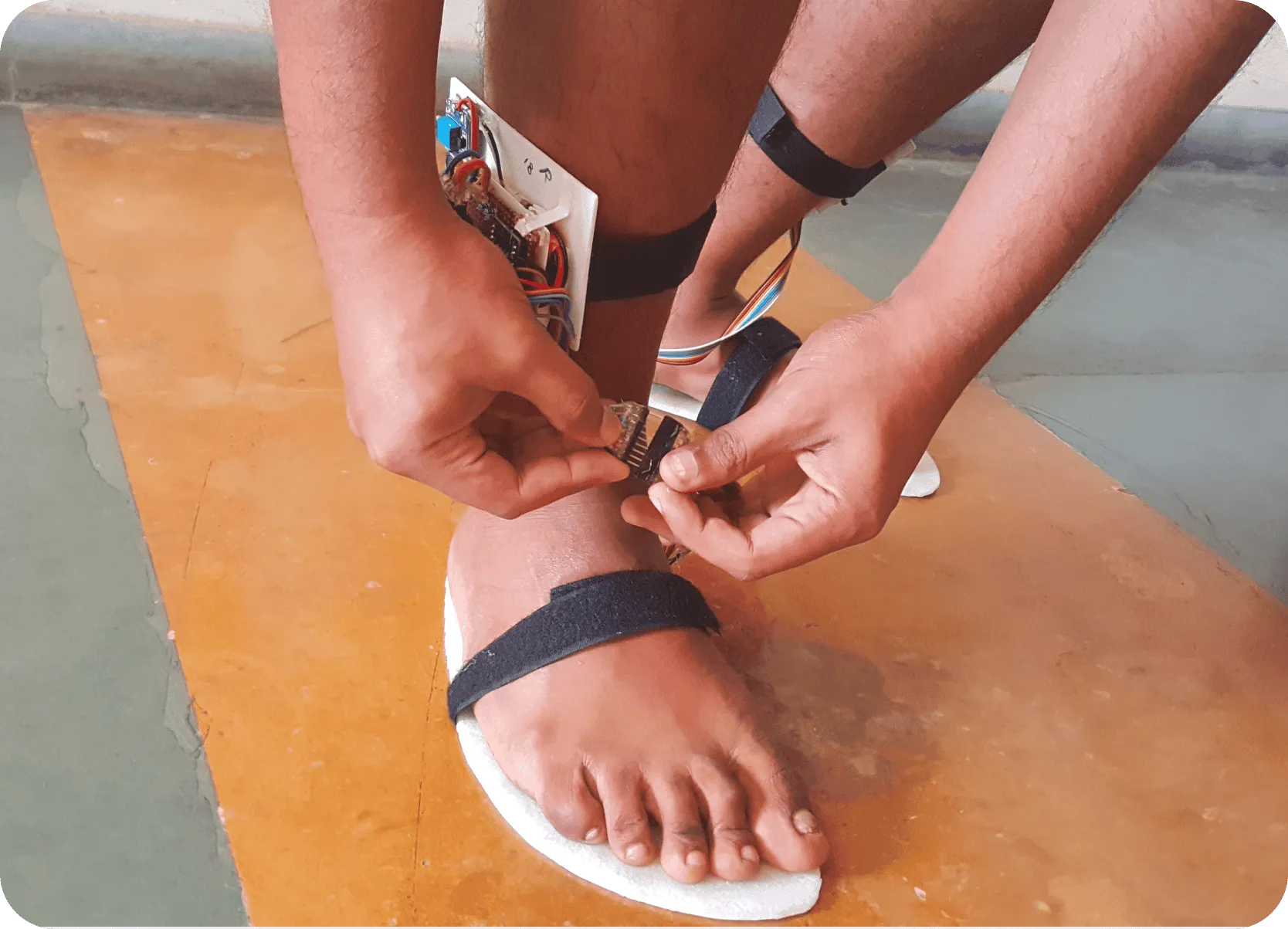
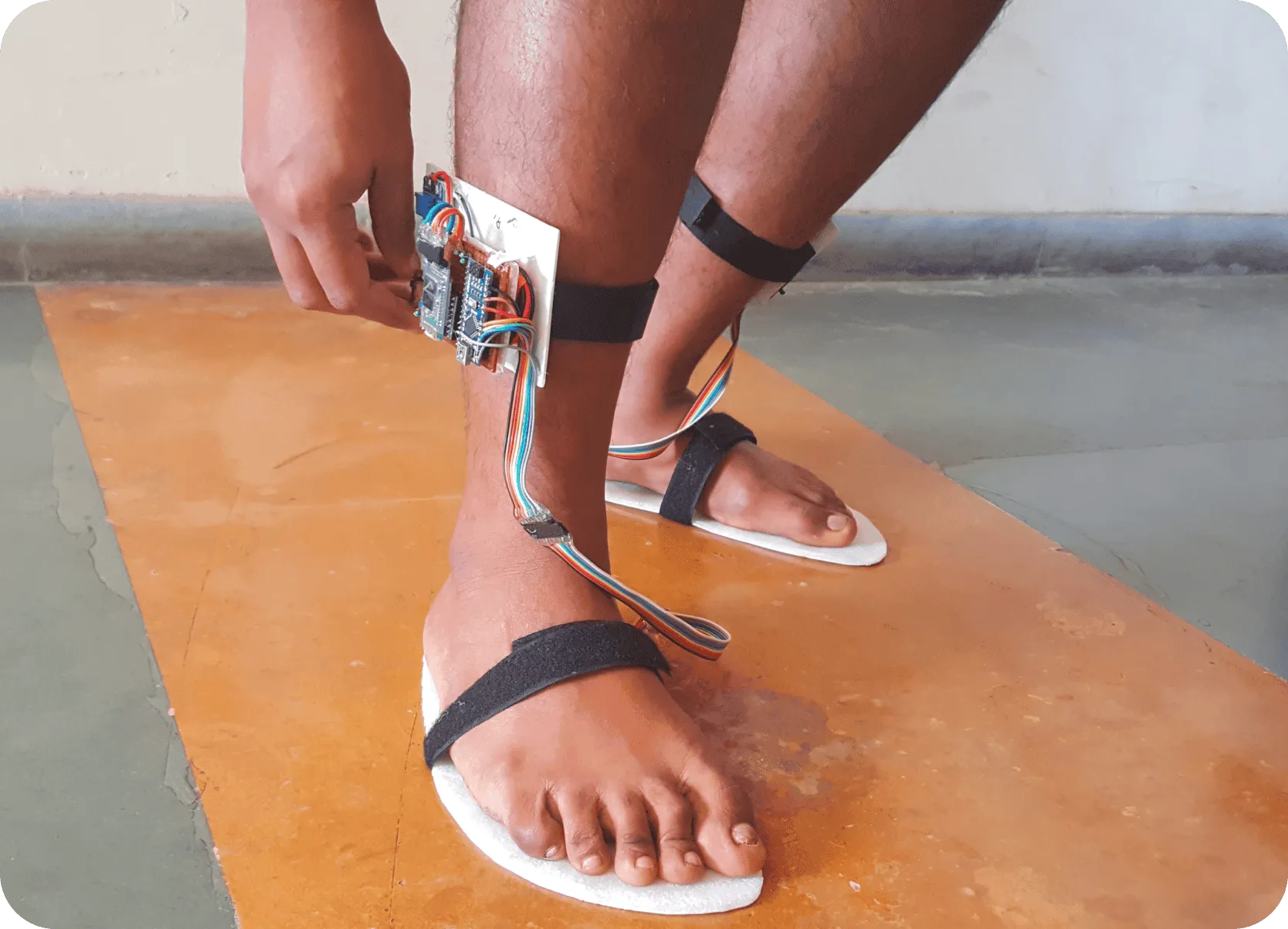
Gait Data Visualization Approach
The core output was a set of visualizations designed to compare gait patterns across conditions (barefoot vs. different footwear). We used dual-axis area charts in Tableau, comparing the data with standards to identify gait events and assess validity (e.g., leg movement phases like swing, toe-off, heel strike, mid-stance, stride, step, and idle/no movement). While line charts could have been used, area charts were chosen for aesthetic purposes
-
Top Chart: Left vs. Right Shank Acceleration (X-axis) over Time.
-
Bottom Chart: Left vs. Right Shank Angular Position (Pitch) over Time.
This allowed simultaneous comparison of both legs' movements. Acceleration was expected to show more variation with footwear changes. A color scheme (Warm = Left, Cool = Right, inspired by navigation lights) was used to distinguish legs easily. Area charts were chosen for visual appeal over line charts.
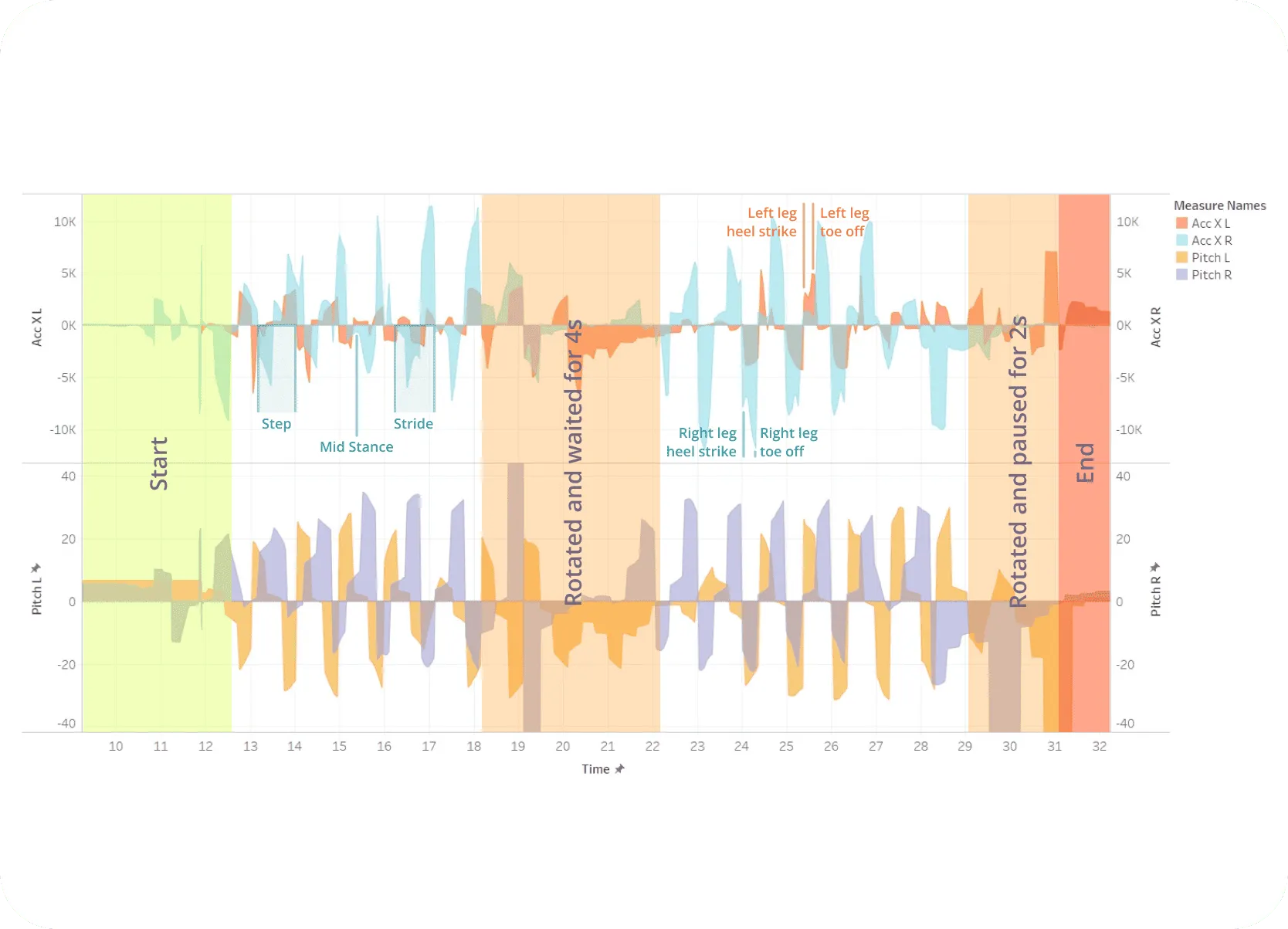
User Evaluation & Findings
We evaluated the system with 9 healthy participants (aged 22-28). Each participant walked a set distance (5m back and forth) under three conditions: barefoot, wearing their most comfortable footwear, and wearing their most uncomfortable footwear. Shank sensor data was captured for each condition.
Procedure
Sensors attached, Bluetooth connection established, participant walked the path while data was recorded to CSV, process repeated for each condition. Video was also recorded for reference.
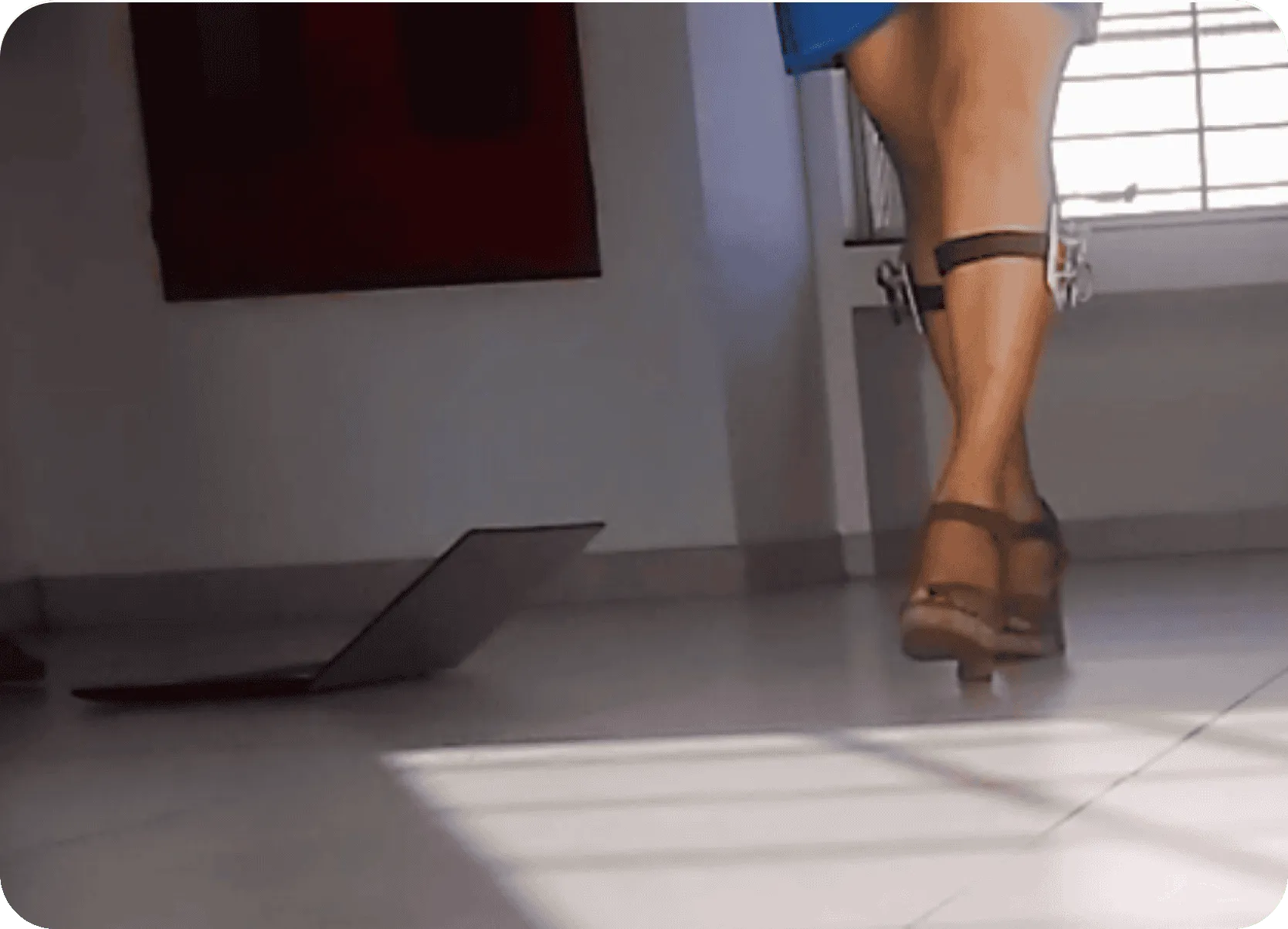
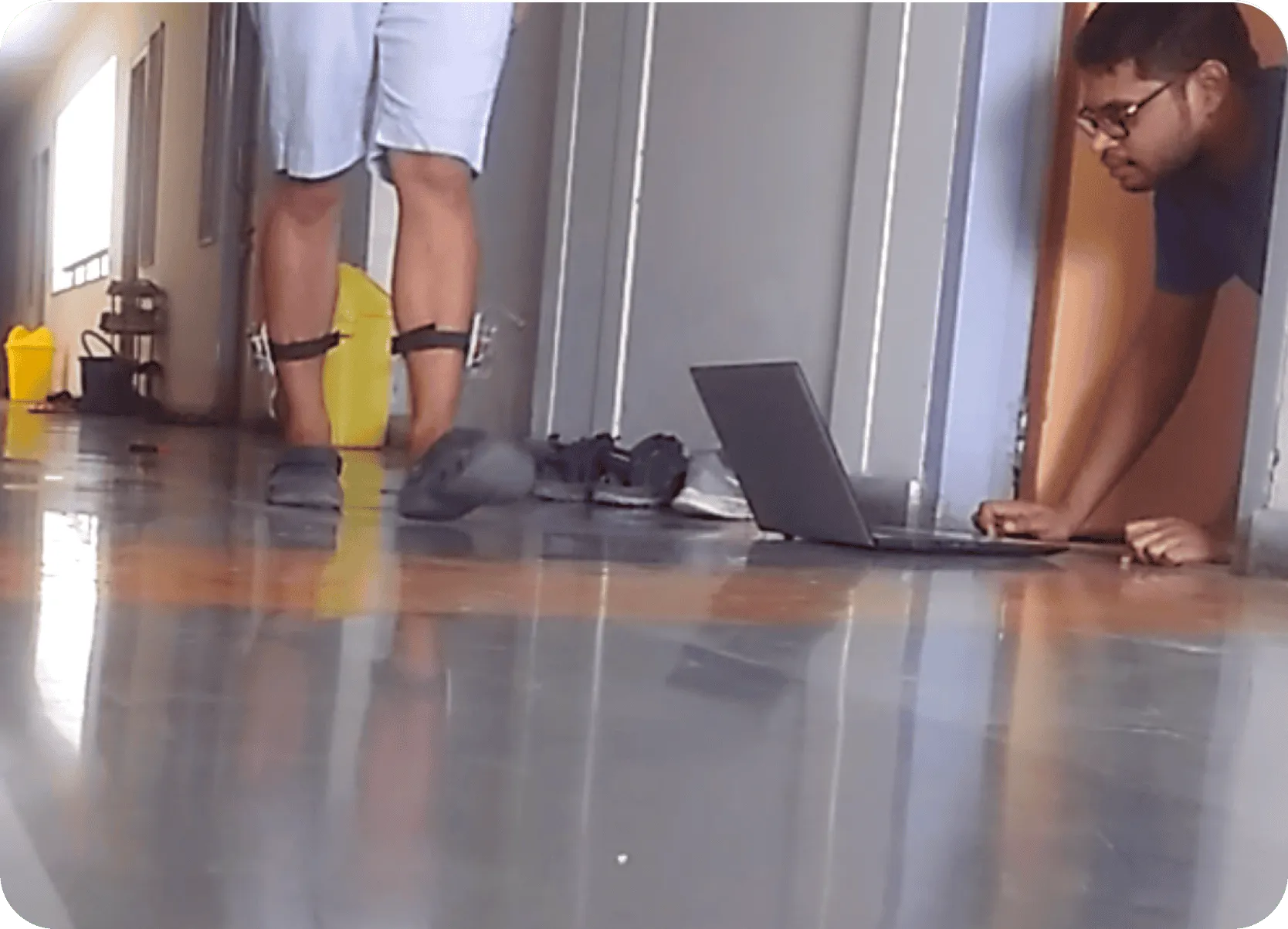
Post-Test
Participants were shown visualizations of their own and others' gait data and asked for feedback.
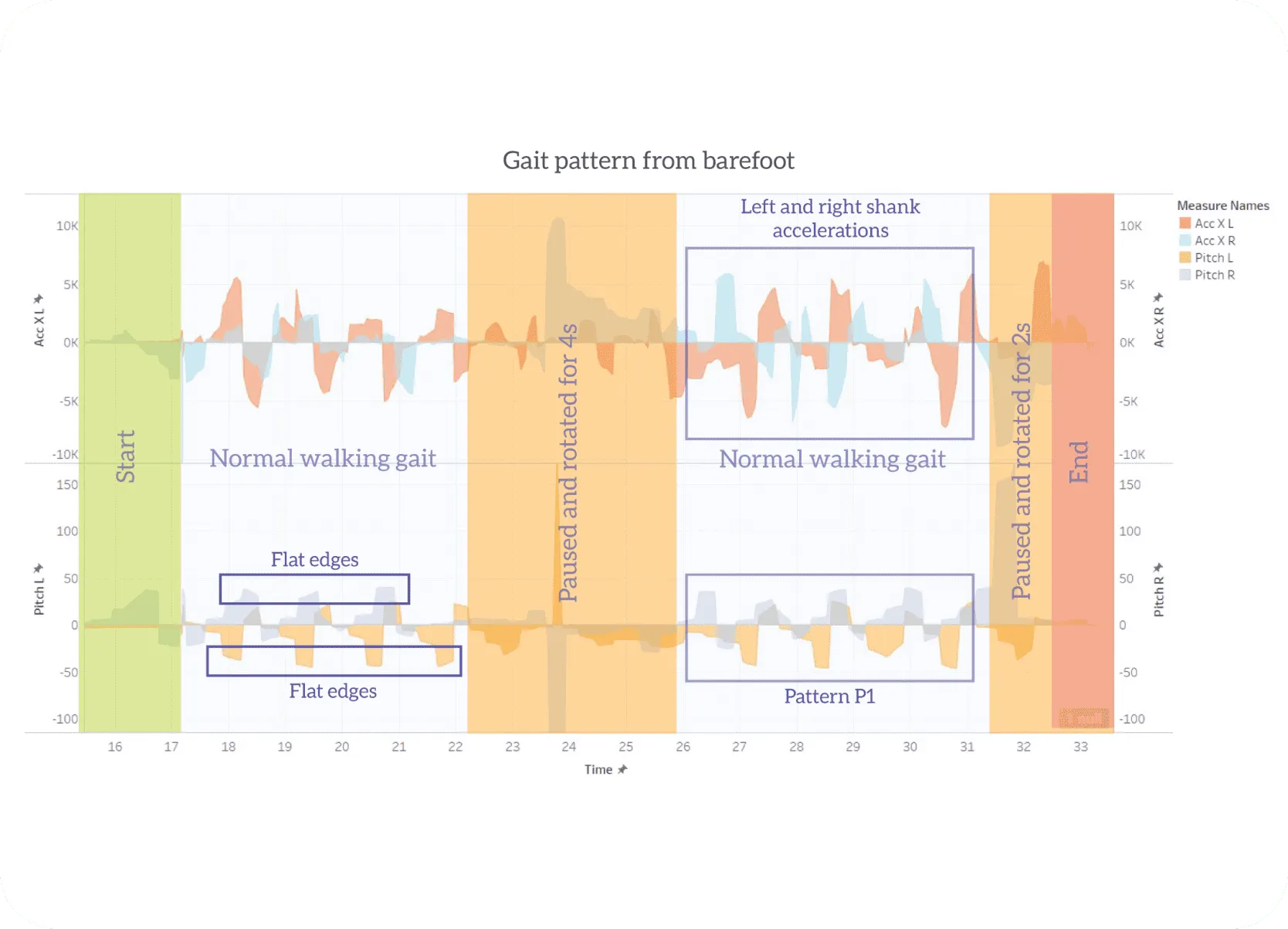
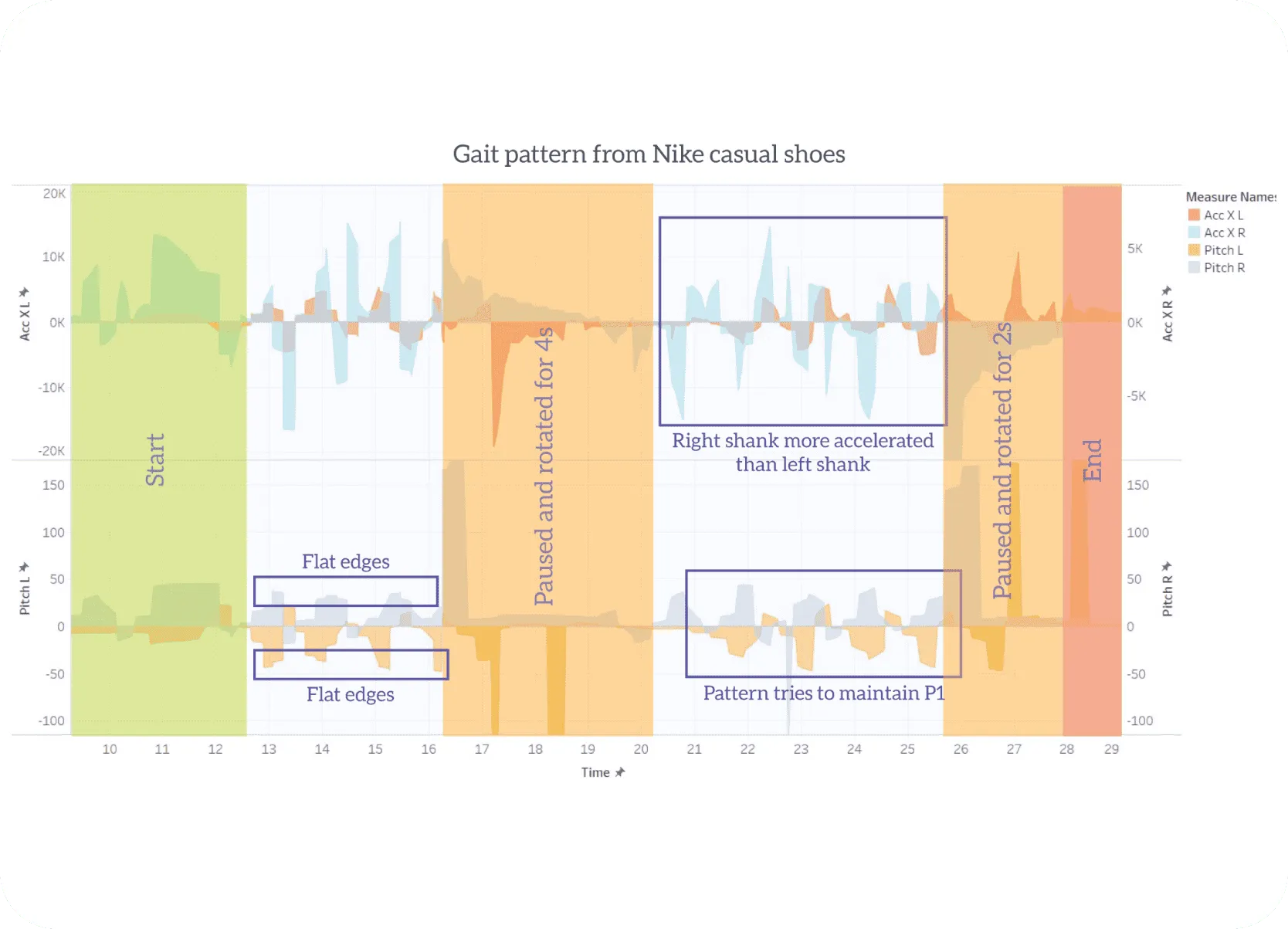
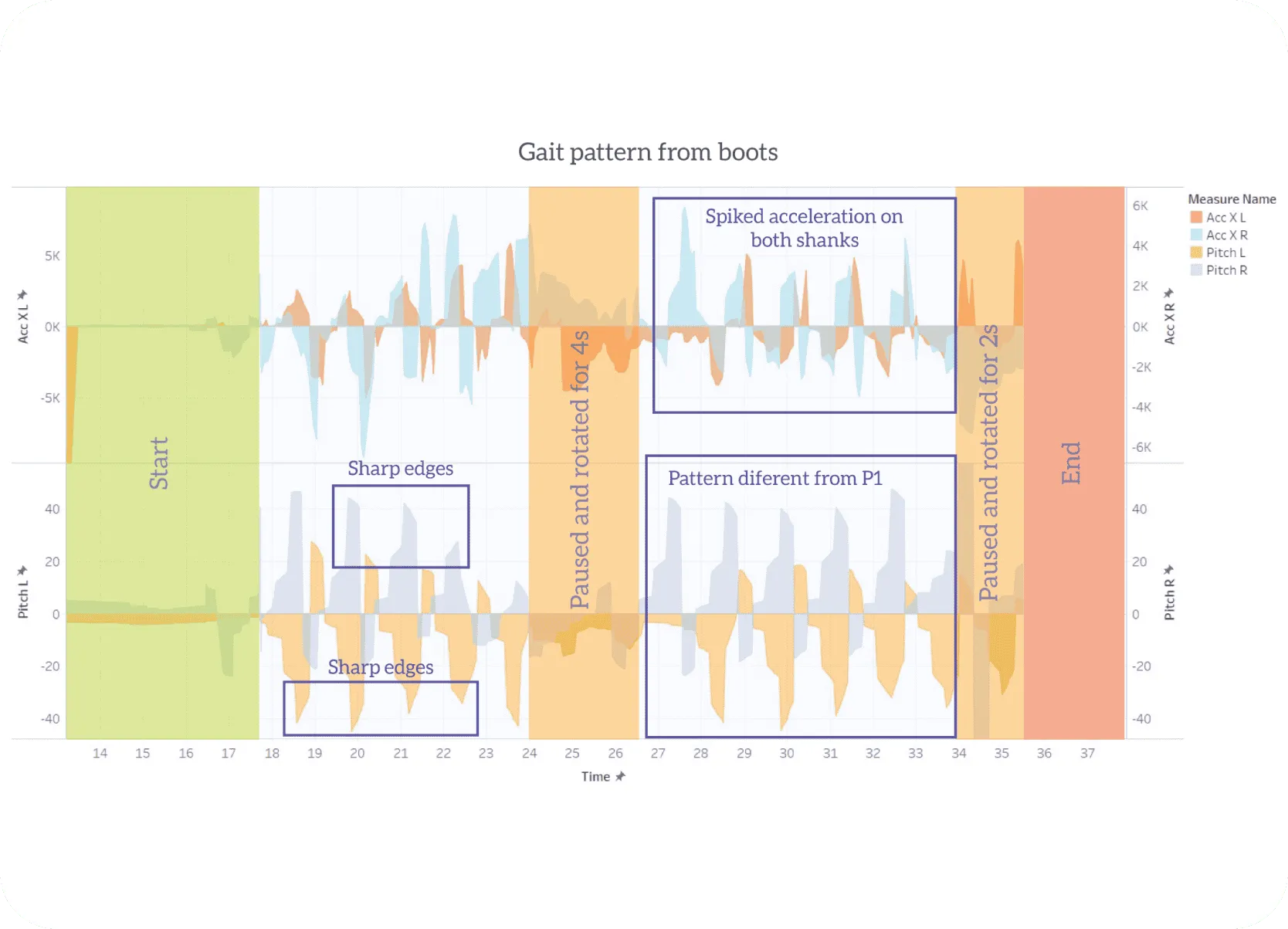
Key Findings
-
Visualization Effectiveness: Participants found the visualizations informative and could recognize differences between their left/right leg movements and how footwear altered their gait compared to barefoot walking. They saw the potential usefulness for choosing better footwear.
-
Awareness: The visuals increased awareness of footwear's impact and the importance of comfort for maintaining a natural gait pattern.
-
Clarity Issues: The color-coding for left/right legs wasn't immediately clear to everyone. Participants suggested more intuitive visualizations, perhaps directly showing foot angle changes or pressure points, without needing explanation.
-
Sensor Stability: Some participants noted the shank sensors could slip due to the flat base and Velcro straps, potentially affecting data accuracy. More secure strapping (e.g., buckles) or direct adhesion was suggested.
-
Potential Applications: Participants suggested uses in retail (shoe selection aid), rehabilitation (monitoring progress), sports (performance analysis), and ergonomics (workplace assessments).
Conclusion & Future Directions
This project demonstrated the feasibility of using a low-cost, IMU-based system to capture and visualize how different types of footwear alter walking gait patterns. The visualizations proved informative for users, increasing their awareness of the link between footwear, comfort, and natural movement.
Future work should focus on:
-
Improving Visualization: Develop more intuitive visual representations of gait parameters (e.g., foot angle visuals) that require less interpretation.
-
Enhancing Sensor Stability: Implement more secure and ergonomic sensor attachment methods (e.g., buckles, adhesive).
-
Refining Methodology: Use longer walking distances, multiple trials per condition, and potentially metronome pacing to improve data consistency.
-
Automation: Integrate algorithms or machine learning for automatic gait parameter detection (e.g., stance/swing time, step length) to provide quantitative data alongside visualizations.
This research highlights the potential for accessible technology to provide valuable insights into gait, empowering individuals and professionals in areas like footwear selection, rehabilitation, and sports science.
Slingshot is a direct outgrowth of this research on visualizing footwear's impact on movement. Initially, the focus was on understanding and visualizing how different footwear (and the absence of footwear) affects human movement. This investigation into biomechanics and data representation naturally evolved into the development of Slingshot, a wearable device designed to provide actionable insights related to movement and performance
References
• Indranil Manna, Dibyendu Pradhan, Seema Ghosh, Sanjit Kumar Kar and Prakash Dhara. 2001. A
Comparative Study of Foot Dimension between Adult Male and Female and Evaluation of Foot
Hazards due to Using of Footwear. Journal of PHYSIOLOGICAL, ANTHROPOLOGY and Applied Human
Science 20(4). Pg 21-246.
• Matthew A. Nurse a, Manuel Hulliger, James M. Wakeling, Benno M. Nigg, Darren J.
Stefanyshyn. 2015. Changing the texture of footwear can alter gait patterns. Journal of
Electromyography and Kinesiology 15, Pg 496-506.
https://doi.org/10.1016/j.jelekin.2004.12.003
• Jan Rueterbories, Erika G. Spaich, Birgit Larsen, Ole K. Andersen.2010. Methods for gait
event detection and analysis in ambulatory systems. Journal of Medical Engineering & Physics
32, Pg 545-552.
• Jing Feng, Jane Wick, Erin Bompiani and Michael Aiona. 2016. Review Article on Current
Orthopaedic Practice. Volume 27, Number 4, Pg 455-464.
• Diana Trojaniello, Andrea Ravaschio, Jeffrey M. Hausdorff, Andrea Cereatti. 2015.
Comparative assessment of different methods for the estimation of gait temporal parameters
using a single inertial sensor: application to elderly, post-stroke, Parkinson's disease and
Huntington's disease subjects. Journal of Gait & Posture.
http://dx.doi.org/10.1016/j.gaitpost.2015.06.008
• Yufridin Wahab, Norantanum Abu Bakar. 2011. Gait Analysis Measurement for Sport
Application Based on Ultrasonic System. IEEE 15th International Sympostum on Consumer
Electroncs.
and 30+ research papers and articles...
Up next
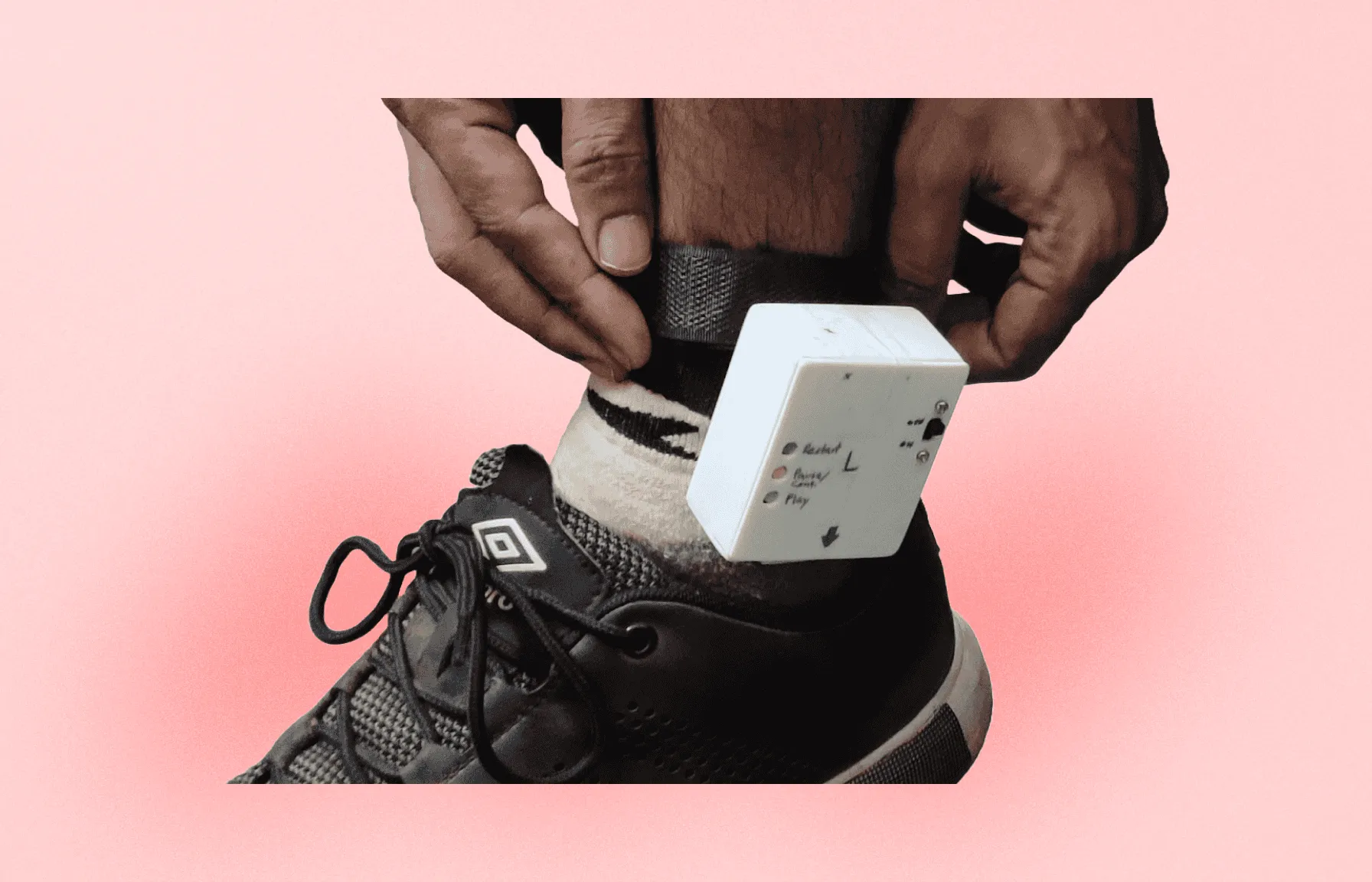
Slingshot—Wearable tech for optimised running
✨ Research, Product, UX
/
2019

Cyclux—Reinventing bike security with tech
✨ Research, Product, UX
/
2018

Elevating JioMeet's Digital Front Door
🏆 Research, Redesign, Website, UX
/
2021 - 2022

McJio Celebrations: Next-Gen Virtual Parties
✨ Research, Pitch, Concept, UX
/
2022 - 2023

JioMeet PIP & Screenshare Refresh
Research, Redesign, Feature, UX
/
2022

Driving Innovation and Enhancements at Jio
UX, Collection, Showcase
/
2019 - 2024